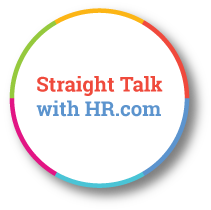Future-Proofing Workplace Compliance: Legal Insights on AI, Pay Transparency & Hybrid Work
Exclusive interview with Jordan Epstein, Partner, Gowling WLG
Posted on 06-03-2025, Read Time: 6 Min
Share:

 |
“A proactive compliance program means regularly reviewing and updating policies, delivering required training and staying engaged with both legal developments and business changes. It starts with having foundational employment agreements and workplace policies in place. These documents are essential for setting clear expectations and protecting the employer’s interests in the event of a dispute,” said Jordan Epstein, Partner, Gowling WLG. |

In an exclusive interview, Jordan discusses how employers can proactively navigate evolving labor laws, adapt compliance frameworks to hybrid and cross-border work models, and address emerging risks related to AI, pay transparency, and workplace equity.
Excerpts from the interview:
Excerpts from the interview:
Q: How are organizations expected to adapt their compliance frameworks in response to the accelerating pace of legislative and regulatory change—particularly in areas like pay transparency, AI in hiring, and workplace equity?
Jordan: Organizations are best positioned to adapt when they have strong foundations in place regarding clear employment agreements and well-structured workplace policies. These tools create a compliance framework that can be updated as laws evolve. With solid baseline practices and foundational documents, employers can respond more efficiently to legislative developments instead of scrambling to catch up.
Q: What common compliance blind spots are you observing among employers navigating hybrid work models and cross-jurisdictional employment arrangements?
Jordan: One common blind spot is the failure to properly adapt employment agreements, compensation plans, and workplace policies to align with evolving Canadian legal requirements. This is especially common among American companies with employees in Canada. Relying on outdated documents drafted for a US context creates unnecessary legal risk and exposure.
Another key issue is the lack of clear policies around remote work. Remote arrangements can give rise to accountability issues without proper oversight. Employers should ensure they have the right to implement reasonable monitoring systems where necessary and clearly reserve the ability to take disciplinary action in cases of time theft or misrepresentation of hours worked. These expectations need to be built into the employment framework from the outset.
Another key issue is the lack of clear policies around remote work. Remote arrangements can give rise to accountability issues without proper oversight. Employers should ensure they have the right to implement reasonable monitoring systems where necessary and clearly reserve the ability to take disciplinary action in cases of time theft or misrepresentation of hours worked. These expectations need to be built into the employment framework from the outset.
Q: With increased enforcement around employment standards and human rights laws, how can legal teams ensure proactive alignment rather than reactive compliance?
Jordan: A proactive compliance program means regularly reviewing and updating policies, delivering required training and staying engaged with both legal developments and business changes. It starts with having foundational employment agreements and workplace policies in place. These documents are essential for setting clear expectations and protecting the employer’s interests in the event of a dispute.
When it comes to workplace policies, however, it is not enough to simply “set it and forget it.” Employers also have ongoing legal obligations, including providing workplace training on topics like harassment and violence prevention and safety in the workplace.
When it comes to workplace policies, however, it is not enough to simply “set it and forget it.” Employers also have ongoing legal obligations, including providing workplace training on topics like harassment and violence prevention and safety in the workplace.
Q: What role does leadership accountability play in maintaining regulatory compliance, and how can HR and legal teams collaborate to reinforce a culture of compliance from the top down?
Jordan: Maintaining regulatory compliance is a collective responsibility led from the top. Leadership plays a critical role in setting expectations and modeling appropriate behavior. HR and legal teams support this by developing clear policies, providing training, and ensuring consistent enforcement. Together, they help build and reinforce a culture of compliance, one where every employee understands their responsibility to follow the rules and report concerns when needed.
Q: How should organizations balance innovation—especially in talent acquisition and workforce automation—with the legal risks posed by emerging privacy and labor regulations?
Jordan: Organizations looking to innovate should do so with a clear understanding of the regulatory landscape. The key is to move fast only after putting the right safeguards in place. Working closely with legal and HR teams upfront helps ensure that innovation does not come at the expense of compliance. A thoughtful, informed approach allows businesses to stay agile while minimizing risk.
Q: Looking ahead, what other regulatory trends should employers be monitoring closely to avoid costly legal exposure or reputational damage?
Jordan: Looking ahead, employers should pay close attention to regulatory trends around data privacy, confidentiality and the ethical use of AI in the workplace. In a remote and digital environment, protecting trade secrets and confidential information is critical. Where proprietary interests exist, organizations must take proactive steps to maintain protection.
AI is another emerging area. Employers should ensure their teams are educated on how to responsibly use AI tools, leveraging their benefits without over-relying on them for tasks like research or opinion-based analysis. As regulations evolve, a thoughtful approach to confidentiality and technology use will be essential to avoiding both legal exposure and reputational risk.
AI is another emerging area. Employers should ensure their teams are educated on how to responsibly use AI tools, leveraging their benefits without over-relying on them for tasks like research or opinion-based analysis. As regulations evolve, a thoughtful approach to confidentiality and technology use will be essential to avoiding both legal exposure and reputational risk.
Error: No such template "/CustomCode/topleader/category"!

